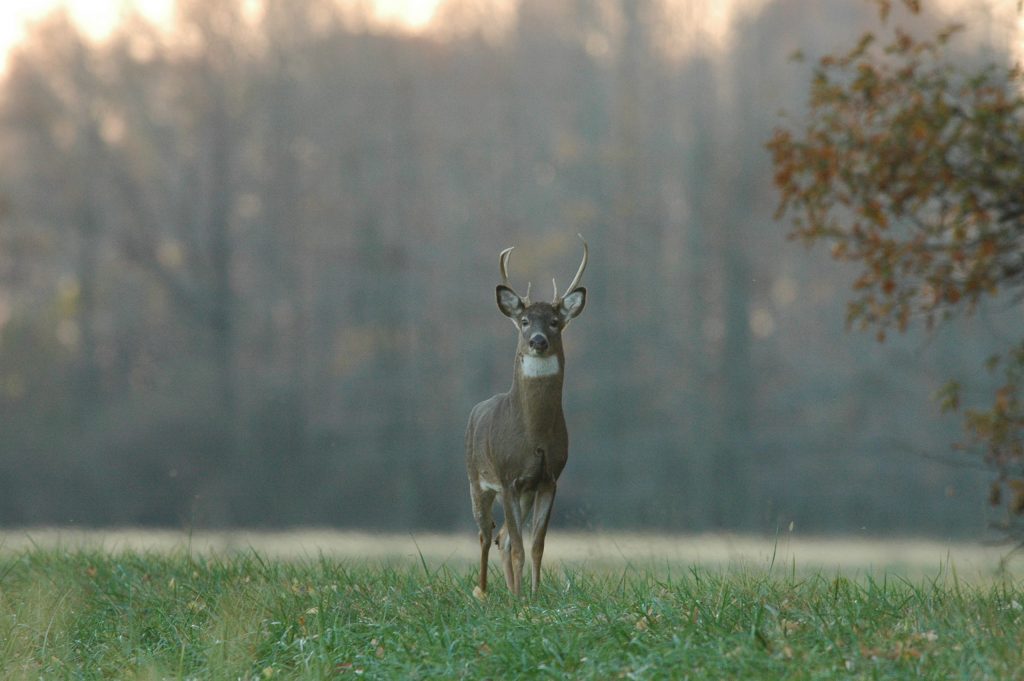I have a love/hate relationship with antlers. I feel the same way about running, autumn, and onion rings. While the reasons for my conflicted feelings differ for each, there is no denying the happiness and dread that accompany all.
Take running, for example. Love it mentally, but when I’m actually pounding the pavement, I wonder what kind of lunatic does this for fun.
But back to antlers. Why such consternation over the most beloved accessory on a deer?
First, the love.
Antlers are truly amazing. Antler tissue is the fastest growing tissue known to man having the capacity to grow an inch or more per day. The whole process is driven by hormones and photoperiod (day length).
The shape, size, color, texture (everything!) of a buck’s antlers are the answer to a complex equation of age, nutrition, genetics, and if his mom loved him enough (yes, I’m serious).
It takes a sizable amount of resources to grow these human-coveted ornaments and at the end of the day (or season), they fall off like yesterday’s trash.
Like snowflakes, every set of antlers (even on the same buck) are different even under perfect conditions. But we all know the world is not perfect, not even for deer. And because antler growth is so complex, lots of things can go “wrong” during the 160-170 day growing season.
Antler injuries are fairly common. The rapid growth requires a tremendous amount of nutrients. Growing antlers have lots of blood vessels to carry these nutrients found in both the velvet and through the core.
When a growing antler is broken, it bleeds profusely, even inside the velvet. Blood can fill the inside of the velvet. The hardening or mineralization process still occurs creating a heavy, swollen, club-like antler. If the injury is to the pedicle (the starting point of all antler growth), then the deformity could persist for several set of antlers or for the rest of the buck’s life if it does not heal.
There is also something known as “contralateral effects”, where injury to one side of the body causes antler deformity on the opposite side. The reasons for this are unknown. And exactly how the antler will be altered from its original size or shape is anyone’s guess.
There have also been reports of bucks with more than 2 “antlers.” Cells in the pedicle hold the key to antler growth. Transplanting pedicle cells to another part of the body can result in antler growth from that area. Researchers have transplanted cells to mice and they have grown antler-like projections. Cells have even been transplanted to the lower leg of a deer and an antler has grown from the leg. Crazy! Bucks with 2+ antlers in the wild likely sustained an injury to the pedicle disrupting and redistributing pedicle cells. Since these cells grow antlers no matter where they are, poof! Antler number 3 can appear. Like I said, antlers are amazing.
So what about the onion rings?
For me, onion rings are perfection from the deep fryer and if I see them on the menu, I can’t resist. The problem: my digestive tract doesn’t agree with my brain or my taste buds.
So what’s my problem with antlers? Empirically, nothing. It’s the ridiculous attention they get. Like my stomach’s over-the-top reaction to onion rings. Really, I ask my belly, is this necessary?
It’s the same question I ask with antlers (except I’m not asking my belly). People through history have done some pretty silly and dangerous things in pursuit of these bony embellishments. Our crazy fascination with antlers is documented as far back as 200 AD.
What of all those sleek, beautiful, brown-eyed ladies out there? Alas, overlooked and dismissed as common.
I guess that’s just the world we live in. I’m still eating onion rings.
-Jeannine Fleegle, biologist
PGC Deer and Elk Section
If you would like to receive email alerts of new blog posts, subscribe here.
And Follow us on Twitter @WTDresearch
